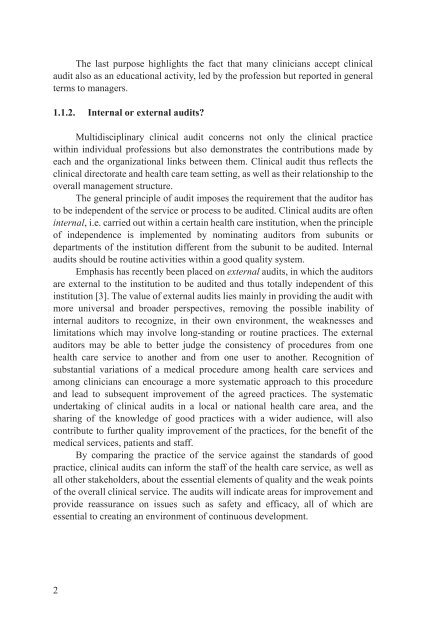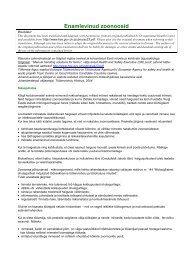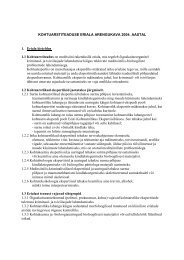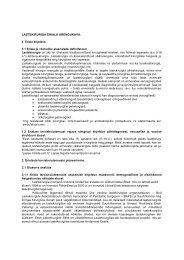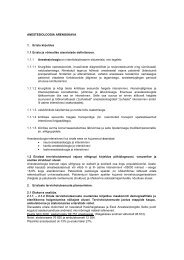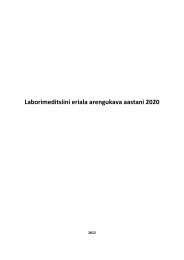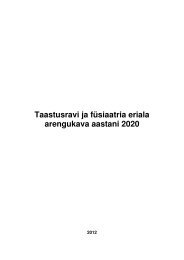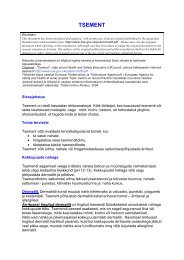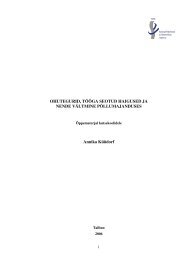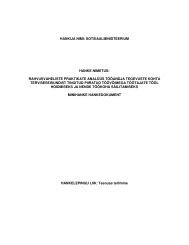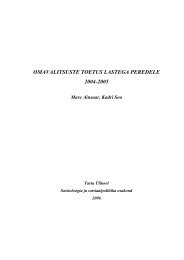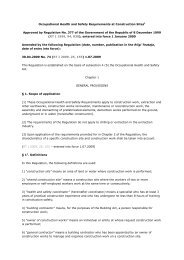SErIES IAEA HumAn HEAltH SErIES IAEA Hum
SErIES IAEA HumAn HEAltH SErIES IAEA Hum
SErIES IAEA HumAn HEAltH SErIES IAEA Hum
Create successful ePaper yourself
Turn your PDF publications into a flip-book with our unique Google optimized e-Paper software.
The last purpose highlights the fact that many clinicians accept clinical<br />
audit also as an educational activity, led by the profession but reported in general<br />
terms to managers.<br />
1.1.2. Internal or external audits<br />
Multidisciplinary clinical audit concerns not only the clinical practice<br />
within individual professions but also demonstrates the contributions made by<br />
each and the organizational links between them. Clinical audit thus reflects the<br />
clinical directorate and health care team setting, as well as their relationship to the<br />
overall management structure.<br />
The general principle of audit imposes the requirement that the auditor has<br />
to be independent of the service or process to be audited. Clinical audits are often<br />
internal, i.e. carried out within a certain health care institution, when the principle<br />
of independence is implemented by nominating auditors from subunits or<br />
departments of the institution different from the subunit to be audited. Internal<br />
audits should be routine activities within a good quality system.<br />
Emphasis has recently been placed on external audits, in which the auditors<br />
are external to the institution to be audited and thus totally independent of this<br />
institution [3]. The value of external audits lies mainly in providing the audit with<br />
more universal and broader perspectives, removing the possible inability of<br />
internal auditors to recognize, in their own environment, the weaknesses and<br />
limitations which may involve long-standing or routine practices. The external<br />
auditors may be able to better judge the consistency of procedures from one<br />
health care service to another and from one user to another. Recognition of<br />
substantial variations of a medical procedure among health care services and<br />
among clinicians can encourage a more systematic approach to this procedure<br />
and lead to subsequent improvement of the agreed practices. The systematic<br />
undertaking of clinical audits in a local or national health care area, and the<br />
sharing of the knowledge of good practices with a wider audience, will also<br />
contribute to further quality improvement of the practices, for the benefit of the<br />
medical services, patients and staff.<br />
By comparing the practice of the service against the standards of good<br />
practice, clinical audits can inform the staff of the health care service, as well as<br />
all other stakeholders, about the essential elements of quality and the weak points<br />
of the overall clinical service. The audits will indicate areas for improvement and<br />
provide reassurance on issues such as safety and efficacy, all of which are<br />
essential to creating an environment of continuous development.<br />
2


